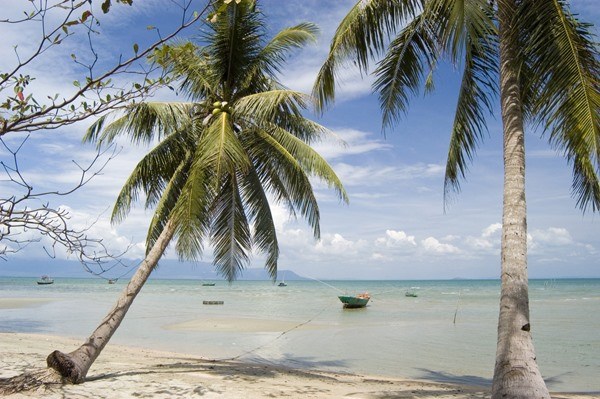
Travel site Thrillist has included Cat Co 2 beach on Cat Ba island, northern Hai Phong city, and Thom beach on Phu Quoc island, southern Kien Giang province, on its list of the best seaside getaways in Vietnam.

Thom
Beach on Phu Quoc Island.
Situated 45km to the east of Hai Phong, Cat Ba boasts
crystal-clear waters, jungles and ancient fishing villages, but has managed to
keep a relatively low profile despite being just south of the world-famous Ha
Long Bay.
The travel site described Cat Co 2 as "the most relaxed of Cat Ba’s three
beaches” and a place where travellers can take in a panoramic view of the
amazing island surrounded by spectacular limestone mountains.
It described Thom beach on Phu Quoc island as "Nested in the forest that dominates
this island,
Thom beach is too far off the beaten track for
coach tourists but brings in enough intrepid backpackers to sustain the local
snack shacks and their surprisingly delicious homebrewed beer.”
Cat Ba island is set to become an eco-smart island and a national tourism site,
according to Hai Phong’s tourism development plan period 2017-2020.
Located 150 kilometres from Hanoi,
Cat Ba consists of 366 large and small islands, beaches and limestone
mountains. In 2004,
Cat Ba islandwas recognised by the UNESCO as a World
Biosphere Reserve
Meanwhile, Phu Quoc, 40km west of southern Kien Giang province, is dubbed the
"pearl” island.
Phu Quoc features a monsoon tropical climate. It has two seasons, the dry
season from November to April and the rainy season from May to October. The
average temperature is 28 degrees Celsius, allowing visitors to enjoy the
island’s beauty at any time of the year.
The Phu Quoc National Park
is one of the most attractive places in the district. It is home to 929 plant
species, of which 42 are listed in the Vietnamese and world red books of
endangered species. The park is part of the Kien Giang biosphere reserve, which
was recognised as a World Biosphere Reserve by UNESCO in 2006.-VNA
Source: VNA
A diverse chain of eco-tourism and resort destinations concentrated in Hoa Binh city and the districts of Tan Lac, Da Bac, and Luong Son… Along with the launch of several key high-quality resort tourism projects, these developments have reshaped the landscape and enhanced the appeal of Hoa Binh as a travel destination.
Boasting diverse terrain, a mild climate, and rich natural resources, Cao Phong district is increasingly asserting its place on Vietnam’s tourism map, attracting both domestic and foreign visitors. The district is renowned for its stunning landscapes, majestic mountains, a crystal-clear hydropower lake, and the unique cultural identity of local ethnic groups.
With its pristine landscapes, unique cultural heritage of Muong ethnic minority, and an expanding range of visitor experiences, Tan Lac district of Hoa Binh has fast become a captivating destination for both domestic and international tourists.
Until now, Sung village in Cao Son commune, Da Bac district remains the only Dao ethnic community in Hoa Binh province to develop a community-based tourism model. Beyond its untouched natural landscapes, cultural identity serves as the cornerstone attraction for visitors.
Alongside the diverse cultural identities of the Kinh, Muong, Tay, Thai, Dao, and Mong ethnic people, Hoa Binh province is also renowned as the "capital" of the northwestern Vietnamese cuisine, offering unique and distinctive dishes. At festivals, during Lunar New Year (Tet), or on significant family or community occasions, special dishes are prepared, leaving a lasting impression on visitors.
A Phong Linh (Yellow Tabebuia) flower garden in Thang village, Thach Yen commune, Cao Phong district is currently in full bloom, drawing a large number of visitors.



